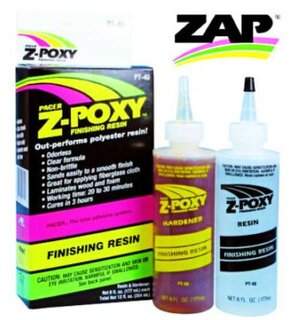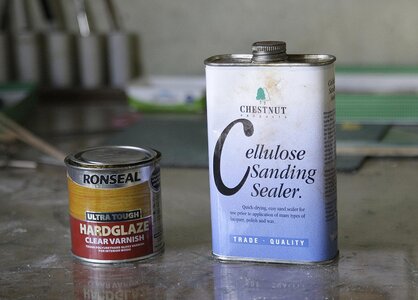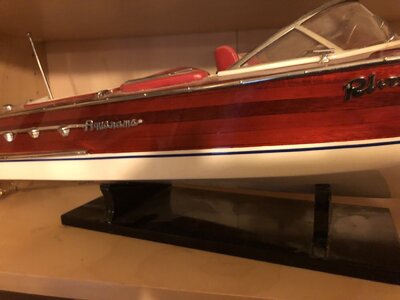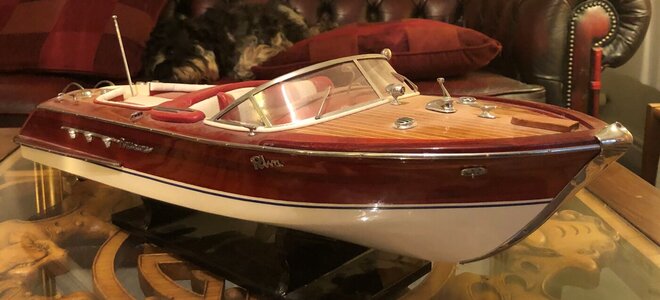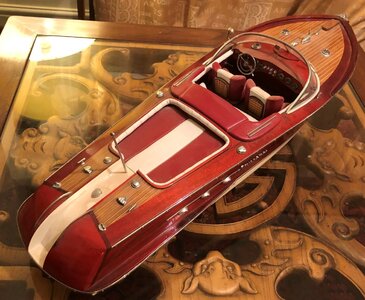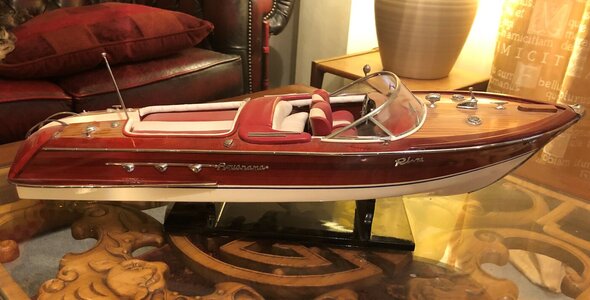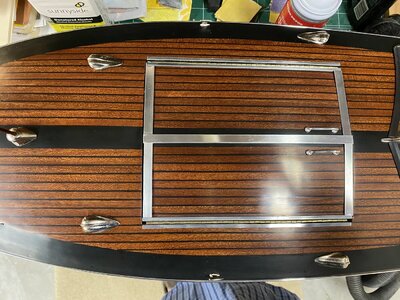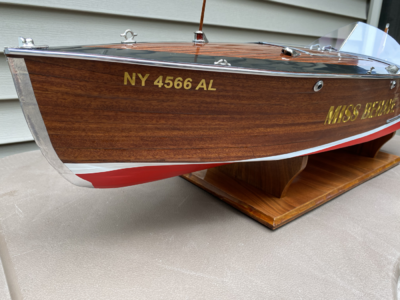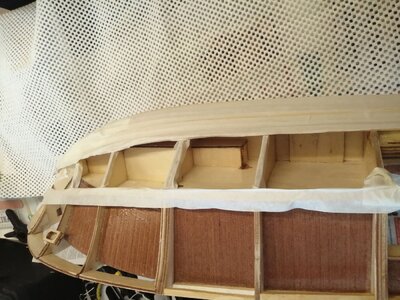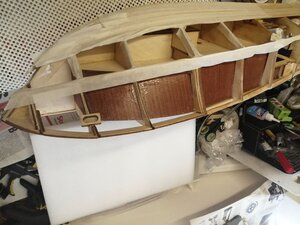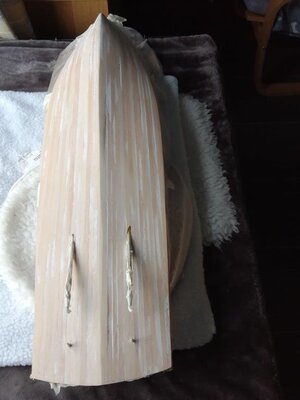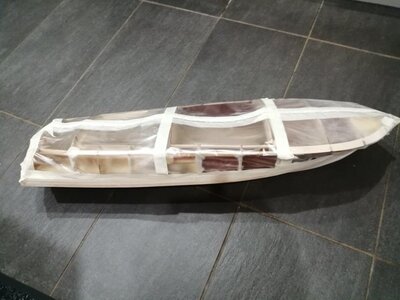I believe 2 ounce is the lightest available, that is what I used. I actually had a kit for rc use that included resin, mixing cups etc.
I discarded the polyester resin and used some 30 or 60 minute (can't remember which) that I thinned with denatured alcohol. I wouldn't recommend this as better Marine type epoxies are now available.
You want an epoxy with ample working time to work out the wrinkles that will initially appear. Watch some YouTube videos on fiberglass various items and you'll see how they can be smoothed out.
More on the cloth, be sure to get woven fabric/cloth, not mat. There is a difference, mat fibers are random and I think more likely to be visible.
Expect to apply multiple coats to achieve a smooth finish. The cloth texture will be obvious on the first coat and smooth out with subsequent coats.
I discarded the polyester resin and used some 30 or 60 minute (can't remember which) that I thinned with denatured alcohol. I wouldn't recommend this as better Marine type epoxies are now available.
You want an epoxy with ample working time to work out the wrinkles that will initially appear. Watch some YouTube videos on fiberglass various items and you'll see how they can be smoothed out.
More on the cloth, be sure to get woven fabric/cloth, not mat. There is a difference, mat fibers are random and I think more likely to be visible.
Expect to apply multiple coats to achieve a smooth finish. The cloth texture will be obvious on the first coat and smooth out with subsequent coats.
Last edited:





